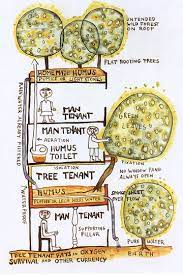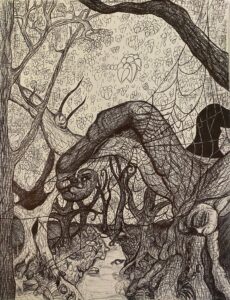
The stereotype of Germans as highly efficient and energy saving individuals stems from a history of industrial effectiveness and related cultural values. With roots tracing back to medieval craftsmen, such as watchmakers in Mainz and armorers Solingen, western Rhineland established Germany’s connection to efficiency with its production of high-quality specialized goods (Burack, 2021.) Later in the 18th century, the east German state of Prussia exemplified German bureaucratic efficiency with its adoption of militaristic and administrative power (Burack, 2021.) As the Prussian state expanded control to unify the German Empire, bureaucracy and military ideals spread as Prussian leadership stressed values such as punctuality, diligence, frugality, and a sense of duty while implementing tax-based public schools (Burack, 2021.) During the 19th century, the Prussian state deliberately categorized these ideals into the “preußische Tugenden” or ‘Prussian Virtues’ in part to establish a national connection to civic duty, but also to create a citizenry that supported the desired “efficient state” (Burack, 2021.) These Prussian virtues, although containing aspects of propaganda, effectively created national pride in industrial efficiency and created a noticeable German work ethic. The stereotypes of German efficiency became prevalent at this time, as tourists in Rhineland often commented on the punctuality, wealth and expediency seen in train times, hotel maintenance and functionality of water systems (Burack, 2021.) The deliberate utilization of an efficiency stereotype bolstered connections to a German identity, while furthering economic and technological advancements.
Today, the utilization of German cultural associations and the stereotype of German efficiency leads to impressive industrial developments in the environmental sector, along with increased adoption of environmental policies and household energy saving practices (Long et al, 2018, pg. 777.) Yet historically, utilizing German nationalism created extremely negative results, especially in terms of efficiency. Among other things, the Nazi party manipulated the Prussian values until civic duty and frugality became systemic murder and cheap labor (Burack, 2021.) Even so, during the mid 20th century Germany managed to pull off a “Wirtschaftswunder,” or “economic miracle,” especially in West Germany (Burack, 2021.) Today, the Prussian Virtues that initially shaped German identity and efficiency evolved into elevated levels of technological innovations and the household acceptance of household energy saving practices.
But what if, Germans aren’t actually more frugal, energy saving and supernaturally work ethic endowed. What if, this stereotype actually stems from the fact that Germany has a history of creating policies and tax incentives that create a system where its citizens do not have to fight and worry about education, income, medical care, and some other generic human rights so that the people actually have time to pay attention to the planet and energy transitions and more than just making sure there basic needs are met. But anyway, let’s talk about stereotypes.
According to Long et al, German households show a higher tendency to take energy saving action than Americans by a difference of 4.2 percentage points (2018, pg. 792.) Using statistical analysis of a survey dataset encompassing 1005 respondents in Germany and 1010 respondents in the USA aged 18 years or older (2018, pg. 783,) Long et al indicates educational awareness of energy conservation benefits demonstrated significance regarding the employment of household efficiency and energy technologies (2018, pg. 792.) The writers suggest that, like Germany, America needs to send more people to expensive schools, learn how to stop buying cheap mass produced foods just to survive, stop taking long warm showers to experience a fleeting moment of joy, and take time away from working non-stop to afford education, cheap mass produced foods, water and heating bills in order to dedicate more time employing energy saving technologies and focus on increasing household efficiency, like the Germans. Really, affordable healthcare and government funded infrastructure has nothing to do with Germany’s energy efficiency culture.
Burack, Cristina. “German Efficiency: The Roots of a Stereotype .” Dw.Com, 28 Mar. 2021, www.dw.com/en/german-efficiency-the-roots-of-a-stereotype/a-56976234.
Long, C., Mills, B. F., & Schleich, J. (2018). Characteristics or culture? Determinants of household energy use behavior in Germany and the USA. Energy Efficiency, 11(3), 777–798. https://doi.org/10.1007/s12053-017-9596-2

